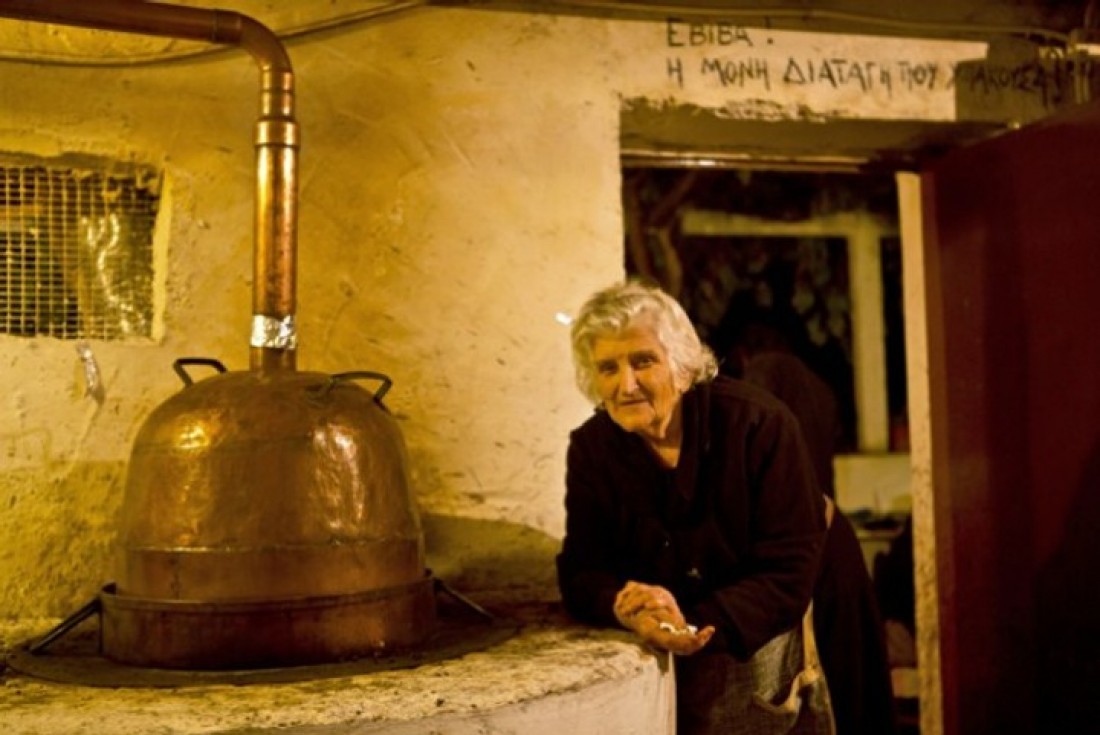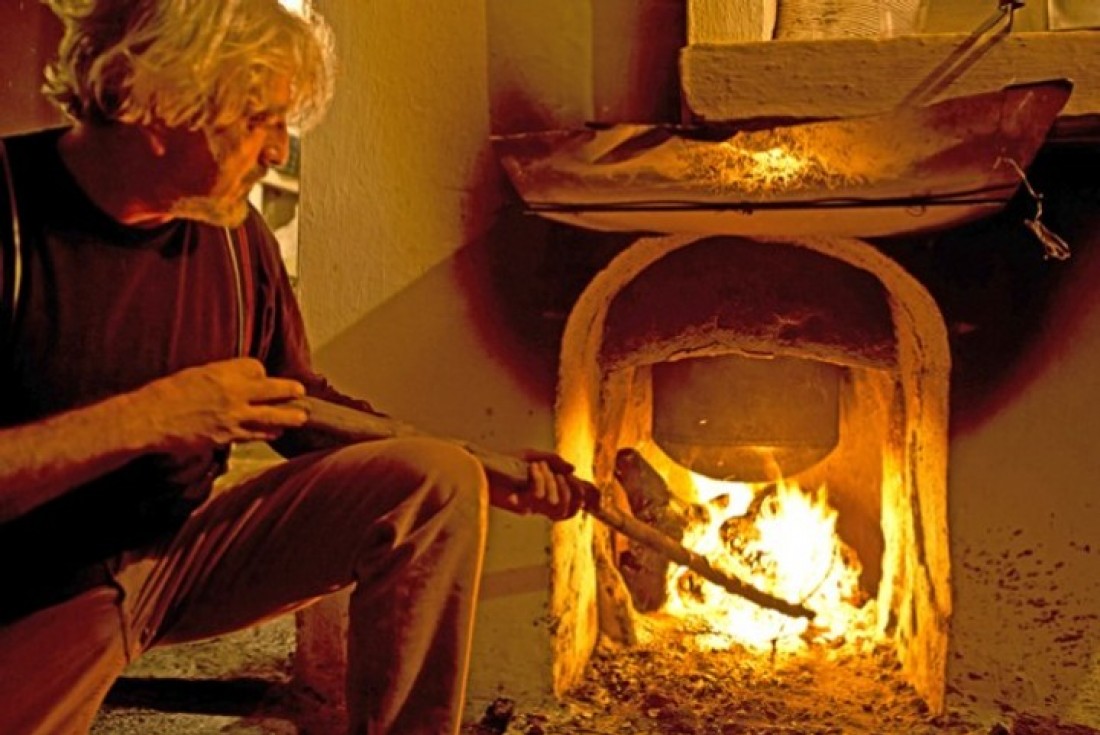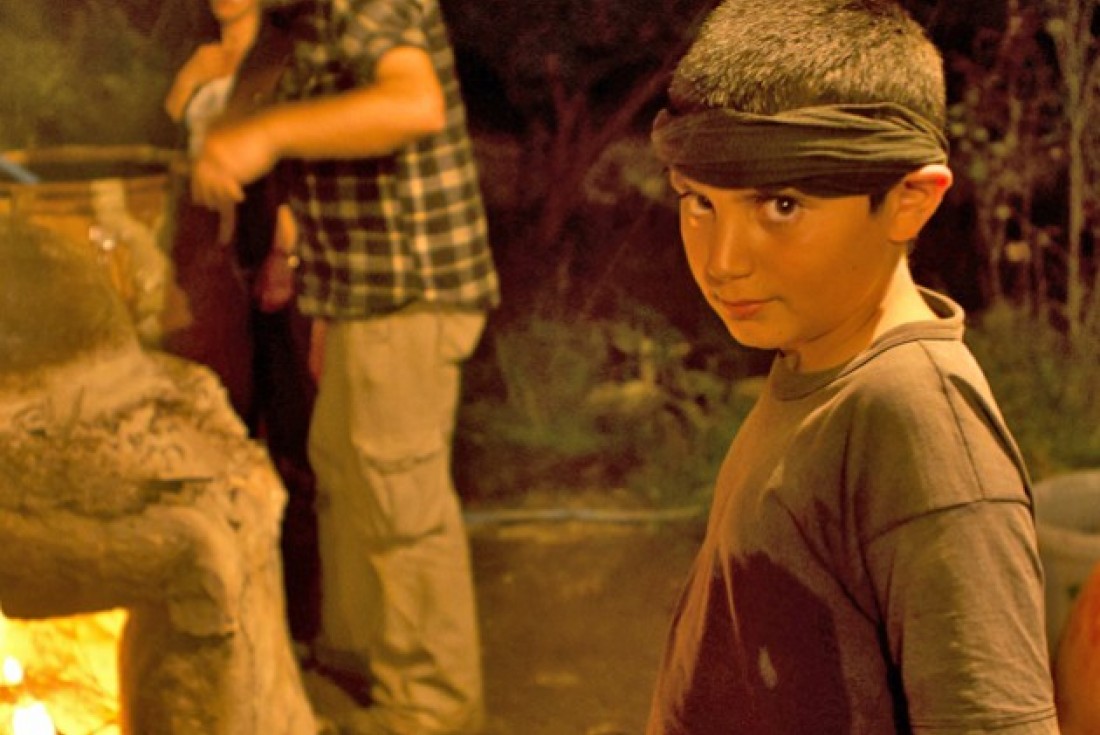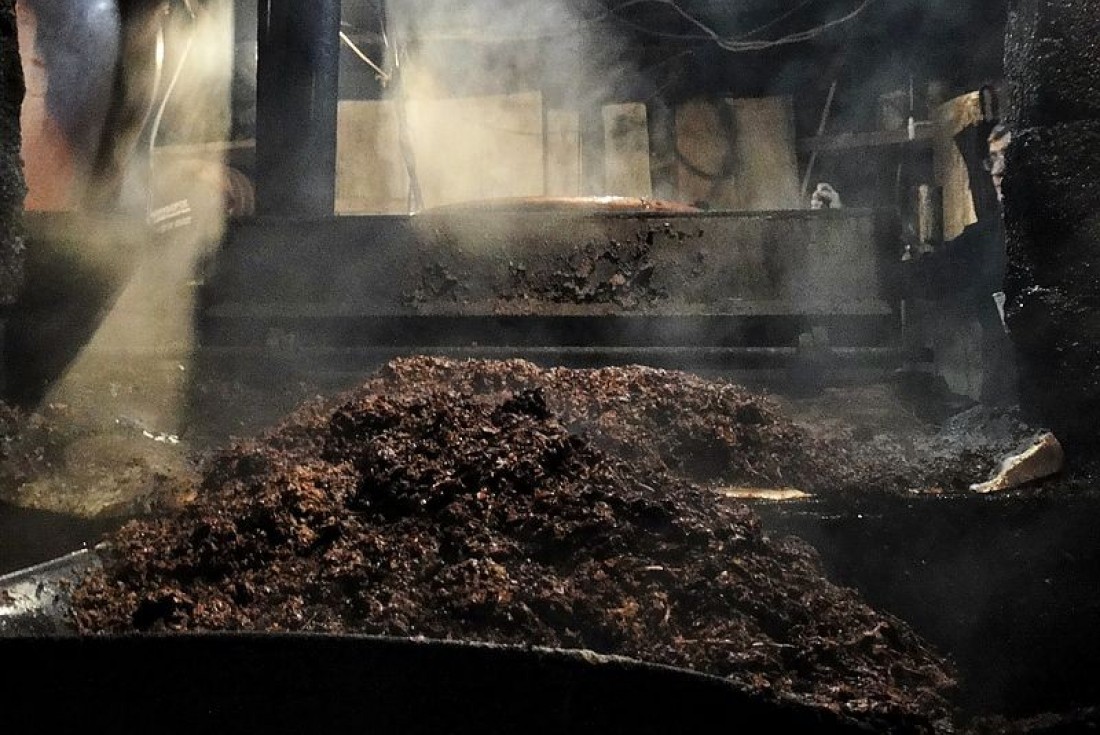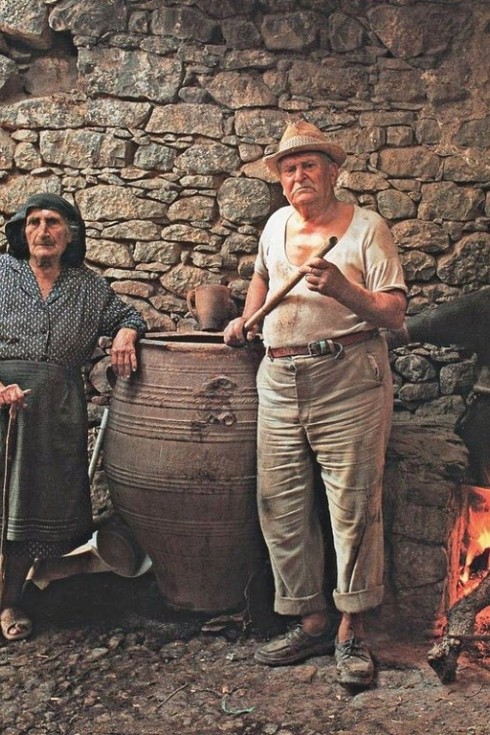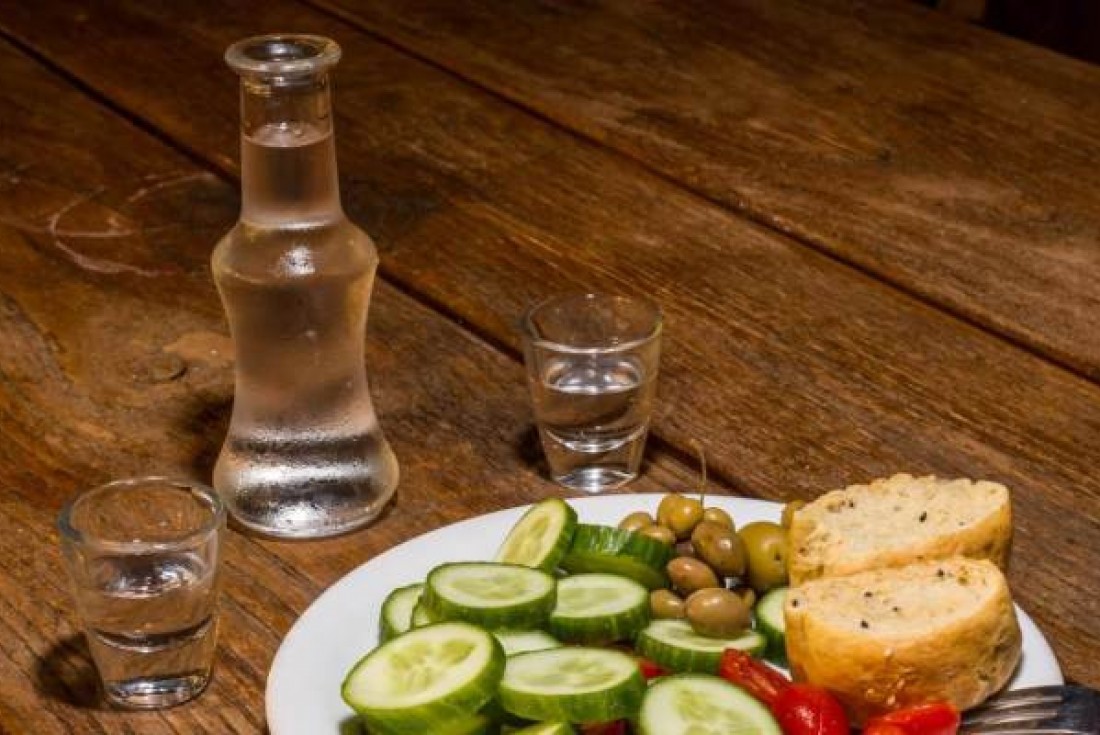Rakokazana, a well-hidden secret in Crete!
Photo GalleryRakokazano or kazanema (raki boiling) is the distillation process of strafyla for the production of raki, also known as tsikoudia. Strafyla are the remainders of grapes after the production of wine. According to legislation, tsikoudia must contain 37.5% alcohol and its maximum methanol content must not be over 8 grammars per liter.
Rakokazano is a ritual taking place all around the island after the vine harvest, especially from October to mid-December. Using any excuse for a Raki feast, the people gather round the brewers’ households to eat, drink, sing and dance. The head of the house who is in charge of the raki brew, is said to ‘kazanevei’ which means to cook the grape juices into the potent, potable result. The head of the house is the chief of the event, being responsible for following the recipe exactly as it was handed down by the previous generations.
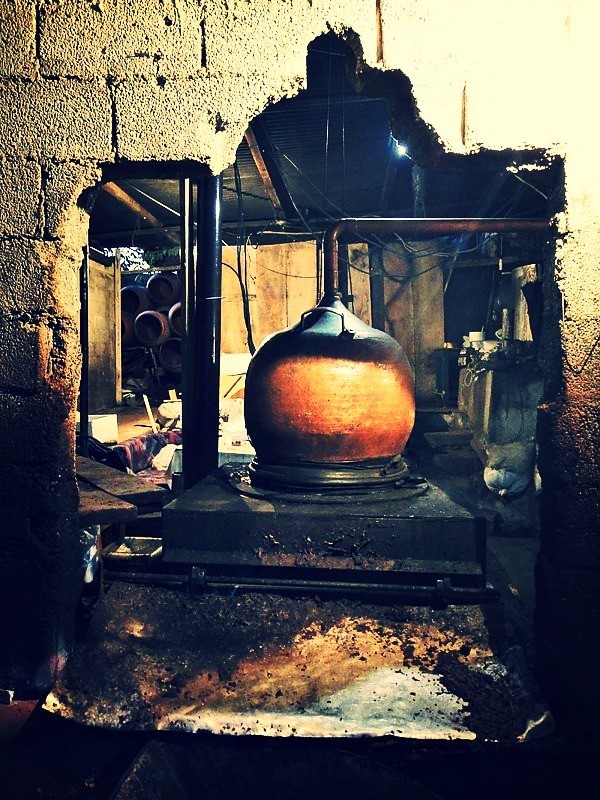
All around Greece distillation can only take place in certified spaces. In almost all Cretan villages, there are “amvykes”, also known as boilers, where grapes are mixed with barrel liquid, and then they are sealed and boil until their temperature reaches the appropriate degrees, so that distillation may begin. There is also a pipe going out of the boiler, which is usually externally cooled so that the steam turns into liquid and is distilled into tsikoudia.
Raki is the true spirit of the party (pun intended) and everyone begins to join in, raising their shot glasses and toasting ‘yeia mas’, in the light of the new season of Raki to come. As spirits rise even further, the participants exchange ‘mantinades’ pl., traditional Cretan poems, usually accompanied by a musician on the lyra. The dancing doesn’t take too long to begin either, turning the Rakokazana into the November fest of Crete “Protoraki” (the first raki) is the first distillate and it is extremely strong. In several Cretan villages, berries are also distilled into “mournoraki” (berry raki), while in the past people also used to distill arbutus into “koumaroraki” (arbutus raki). This process is usually accompanied with a small feast with food, wine and plenty of raki, as whoever “kazanevei” (distills raki) invites their friends to celebrate this event.

This tradition is preserved until our days, proving the importance of the gathering of people and the process of rakokazano is an integral part of Cretan culture.In Crete, the sharing and social drinking of raki is considered to be a sign of politeness and friendship, as it is often part of most social gatherings. Kind of like a social…lubricant of communication, with raki the Cretans make toasts, they welcome friends and family, they make strangers feel like guests, and guests feel like royalty. Raki is inextricably linked to Cretan hospitality, a inherent quality and sentiment that begins at every Cretan home.
If you visit in Crete this month, look for a mountain village inland and you will surely find some friends to distill the traditional drink of the Cretan people in the same way as unchanged for years. What an opportunity to escape ones 9 to 5 routine!
Last but not least,you could find homemade authentic Cretan raki at our Eco trip West, cooking Class, taste of Nature, gastronomy tour or actually in every corner of Crete.
Oh, be prepared to get drunk, it's only natural!
#exploreCrete #Crete #uniqueproducts #customtradition #homemade
Read More

Romantic Getaway to Crete
Crete, with its breathtaking landscapes, charming villages and crystal clear waters, is the ideal destination for a romantic getaway. Whether you want...
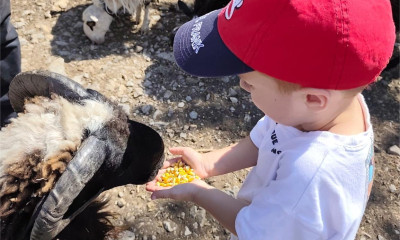
Family Activities to do in Rethymno
Rethymno, located on the island of Crete, is an ideal destination for a family vacation thanks to its rich culture, magnificent landscapes and ...

Nature Exploration in Crete
Crete, the largest island in Greece, is a real paradise for nature and adventure lovers. With its majestic mountains, spectacular gorges, idyllic ...

